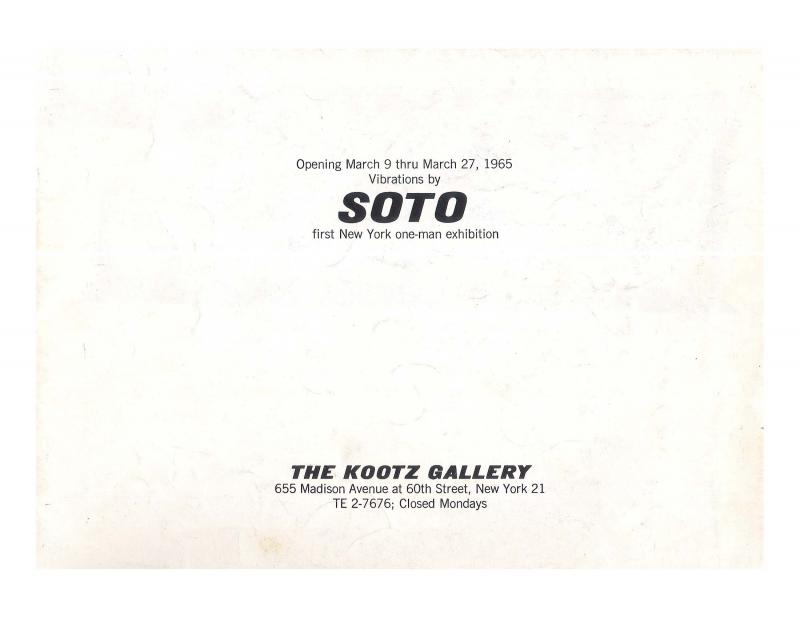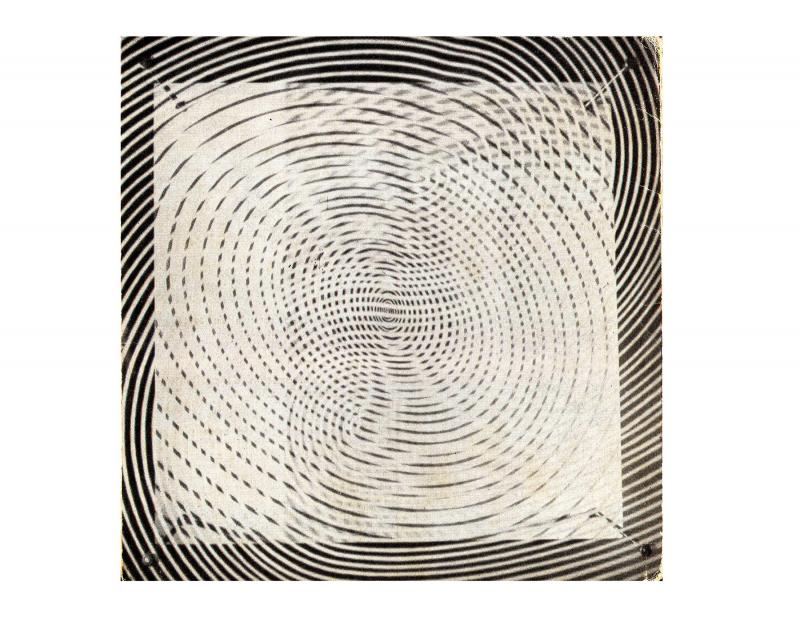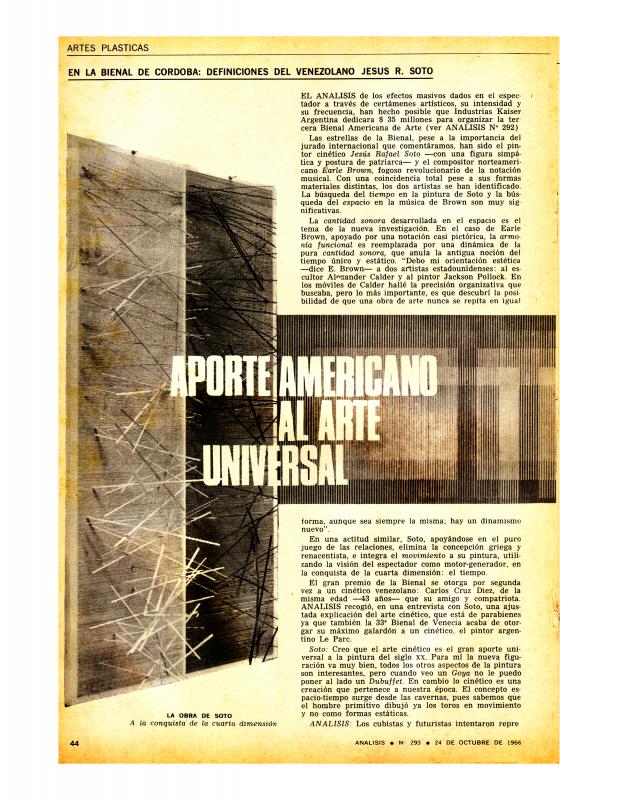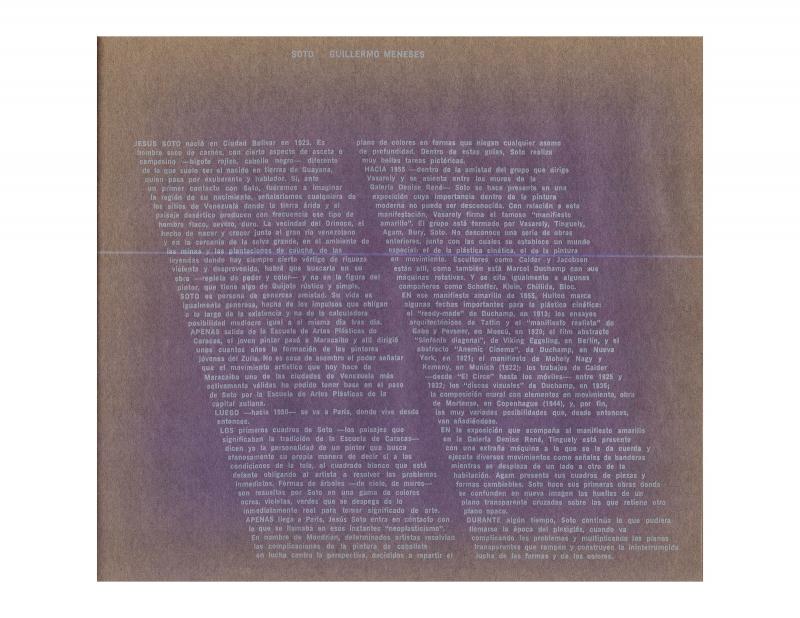This article was published by Venezuelan artist and writer Alejandro Otero [Rodríguez] (1921–1990) in the Caracas newspaper El Nacional for the show Soto: Estructuras Cinéticas [Soto: Kinetic Structures], presented at the MBA (Museo de Bellas Artes) in Caracas in 1957. It was the first solo exhibition for Jesús Rafael Soto (1923–2005) in the Venezuelan capital, as well as his first outside Europe. Very complex on a conceptual level, the text describes a foundational stage in Soto’s work, in which he was still using Plexiglas in order to superimpose transparent planes. Shortly thereafter, Soto would abandon this material given its reflective qualities, given that in his judgment, it added unwanted external elements to the work and therefore interfered with the desired perception. This article was published in 1957, at a time when Otero was maintaining an infamous debate with editor and journalist Miguel Otero Silva regarding the validity (or lack thereof) of the abstract art movement as a legitimate trend within contemporary art, along with the criteria of the official salons of painting. He emphasizes the fact that [this text] was written by an artist who was in some way like Soto and was of the same generation (both were from the state of Bolívar) and who also had similar artistic aspirations. Among these, the search for a pure and true abstract art and an interest in diverse optical issues, such as movement and the dynamics of a materials, stand out. A marked (and openly accepted) influence from radical theory that arose out of Cézanne’s work—this is also true of the majority of abstract artists of that same generation including Carlos Cruz-Diez. Soto first encountered Otero in Caracas, at the beginning of the 1940s, when he arrived at the Escuela de Bellas Artes in Caracas. Soto described him as one of the most brilliant artists at the school, and through him he first learned about Surrealist and abstract art. Otero would leave a short while later for Paris and there he would join the group Los Disidentes [The Dissidents], and would also meet with Soto there, at the beginning of the 1950s, when the group had already disbanded. Although he became friends with [the group] members, Soto preferred to continue his work and to independently search for pure abstraction. [For other critical texts on Soto’s work, see the ICAA digital archive: “Sin título [texto del catálogo, ” Vibrations By Soto, The Kootz Gallery 1965] [Untitled: (Text from the Vibration by Soto catalogue, the Kootz Gallery 1965)] (doc. no. 1069781); “Soto: Estructuras cinéticas” [Soto: Kinetic Structures] (doc. no. 1059619); “En la Bienal de Córdoba: Definiciones del venezolano Jesús R. Soto. Aporte americano al arte universal” [At the Cordoba Biennale: Definitions of Venezuelan Jesús R. Soto: American Contribution to Universal Art] (doc. no. 772726); “Soto” (doc. no. 1080690)].




